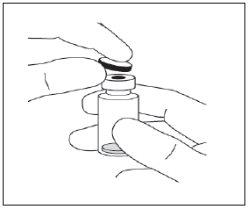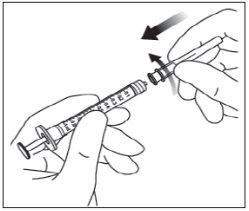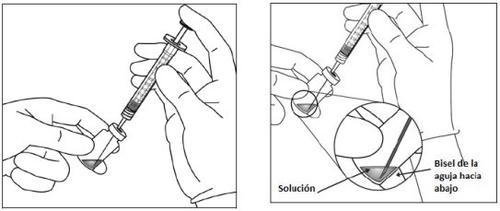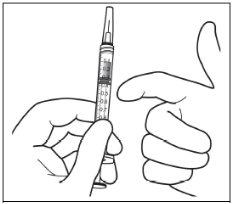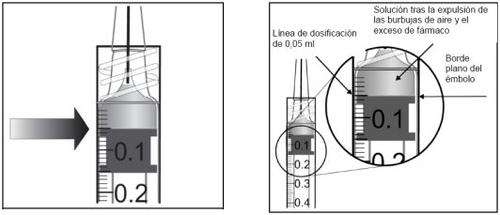

ЭЙЛИЯ 40 мг/мл РАСТВОР ДЛЯ ИНЪЕКЦИЙ В ФЛАКОНЕ

Спросите врача о рецепте на ЭЙЛИЯ 40 мг/мл РАСТВОР ДЛЯ ИНЪЕКЦИЙ В ФЛАКОНЕ

Инструкция по применению ЭЙЛИЯ 40 мг/мл РАСТВОР ДЛЯ ИНЪЕКЦИЙ В ФЛАКОНЕ
Введение
Проспект: Информация для пациента
Эйлеа 40 мг/мл раствор для инъекций в ампулах
афлиберцепт
Прочитайте внимательно весь проспект перед тем, как вам будет введено это лекарство, поскольку в нем содержится важная информация для вас.
- Сохраните этот проспект, поскольку вам может потребоваться прочитать его снова.
- Если у вас есть какие-либо вопросы, проконсультируйтесь с вашим врачом.
- Если вы испытываете побочные эффекты, проконсультируйтесь с вашим врачом, даже если они не перечислены в этом проспекте. См. раздел 4.
Содержание проспекта
- Что такое Эйлеа и для чего он используется
- Что вам нужно знать перед тем, как вам будет введен Эйлеа
- Как вам будет введен Эйлеа
- Возможные побочные эффекты
- Хранение Эйлеа
- Содержание упаковки и дополнительная информация
1. Что такое Эйлеа и для чего он используется
Эйлеа - это раствор, который вводится в глаз для лечения некоторых глазных заболеваний у взрослых пациентов, называемых:
- нововаскулярной возрастной макулярной дегенерацией (эксудативной) или DMAE эксудативной
- нарушением зрения из-за макулярного отека, вызванного блокировкой ретинальных вен (центральной или ветвистой ретинальной окклюзии)
- нарушением зрения из-за диабетического макулярного отека (ДМО)
- нарушением зрения из-за миопической хориоидальной нововаскуляризации (МХН)
Афлиберцепт, активное вещество Эйлеа, блокирует активность группы факторов, называемых фактором роста эндотелия сосудов А (VEGF-A) и фактором роста плаценты (PlGF).
У пациентов с DMAE эксудативной и МХН, когда эти факторы присутствуют в избытке, они влияют на образование аномальных новых сосудов в глазу. Эти новые сосуды могут вызвать утечку компонентов крови в глаз, что приводит к повреждению тканей, ответственных за зрение.
У пациентов с центральной или ветвистой ретинальной окклюзией происходит блокировка основной вены, которая транспортирует кровь из сетчатки. В результате этого увеличиваются уровни VEGF, что приводит к утечке жидкости в сетчатку и, следовательно, к отеку макулы (части сетчатки, ответственной за тонкое зрение), который называется макулярным отеком.
Когда макула наполняется жидкостью, центральное зрение становится нечетким.
У пациентов с ветвистой ретинальной окклюзией происходит блокировка одной или нескольких ветвей основного сосуда, который транспортирует кровь из сетчатки. В результате этого увеличиваются уровни VEGF, что приводит к утечке жидкости в сетчатку и, следовательно, к отеку макулы.
Диабетический макулярный отек - это отек сетчатки, который возникает у пациентов с диабетом из-за утечки жидкости из сосудов макулы. Макула - это часть сетчатки, ответственной за тонкое зрение. Когда макула отекает, центральное зрение становится нечетким.
Эйлеа показал свою эффективность в остановке роста аномальных новых сосудов в глазу, которые часто кровоточат или имеют утечки жидкости. Эйлеа может помочь стабилизировать и, в многих случаях, улучшить потерю зрения, вызванную DMAE эксудативной, центральной или ветвистой ретинальной окклюзией, ДМО и МХН.
2. Что вам нужно знать перед тем, как вам будет введен Эйлеа
Эйлеа не должен быть введен
- если вы аллергичны к афлиберцепту или любому другому компоненту этого лекарства (перечисленному в разделе 6)
- если у вас есть активная инфекция или подозрение на инфекцию в глазу или вокруг него (глазная или периокулярная инфекция)
- если у вас есть тяжелый воспалительный процесс в глазу (индикатор боли или покраснения).
Предостережения и меры предосторожности
Проконсультируйтесь с вашим врачом перед тем, как вам будет введен Эйлеа:
- Если у вас есть глаукома.
- Если у вас есть истории видения вспышек света или плавающих частиц или если внезапно увеличивается размер и количество плавающих частиц.
- Если вам была проведена операция на глазу или запланирована операция в течение четырех недель до или после введения Эйлеа.
- Если у вас есть тяжелая форма центральной или ветвистой ретинальной окклюзии, не рекомендуется лечение Эйлеа.
Кроме того, важно знать, что:
- Безопасность и эффективность Эйлеа при введении в оба глаза одновременно не были изучены, и если используется таким образом, может привести к более высокому риску побочных эффектов.
- Введения Эйлеа могут вызвать увеличение давления внутри глаза (внутриглазное давление) у некоторых пациентов в течение 60 минут после введения. Ваш врач будет следить за вами после каждой инъекции.
- Если вы desarrollаете инфекцию или воспаление внутри глаза (эндофтальмит) или другие осложнения, вы можете заметить боль или увеличение дискомфорта в глазу, ухудшение покраснения глаза, нечеткое или уменьшенное зрение и увеличение чувствительности к свету. Важно, чтобы любой симптом, который появляется, был диагностирован и behand как можно скорее.
- Ваш врач проверит, есть ли у вас другие факторы риска, которые могут увеличить вероятность разрыва или отслойки слоев глаза (разрыв или отслойка сетчатки, или разрыв или отслойка пигментного эпителия сетчатки), в этом случае Эйлеа будет введен с осторожностью.
- Эйлеа не должен быть использован во время беременности, unless потенциальная польза превышает потенциальный риск для плода.
- Женщины детородного возраста должны использовать эффективные методы контрацепции во время лечения и в течение как минимум трех месяцев после последней инъекции Эйлеа.
Системное использование ингибиторов VEGF, веществ, подобных тем, которые содержатся в Эйлеа, потенциально связано с риском блокировки кровеносных сосудов сгустками крови (тромбоэмболические события), которые могут привести к инфаркту миокарда или инсульту. После введения Эйлеа в глаз существует теоретический риск того, что могут произойти эти события. Данные о безопасности лечения пациентов с центральной или ветвистой ретинальной окклюзией, ДМО и МХН, которые перенесли инсульт, транзиторный ишемический атаку или инфаркт миокарда в течение последних шести месяцев, ограничены. Если любой из этих случаев относится к вам, Эйлеа будет введен с осторожностью.
Опыт ограничен в лечении:
- Пациентов с ДМО из-за диабета 1-го типа.
- Пациентов с диабетом и высокими средними значениями сахара в крови (гликозилированный гемоглобин выше 12%).
- Пациентов с диабетической ретинопатией, называемой пролиферативной диабетической ретинопатией.
Не существует опыта в лечении:
- Пациентов с острыми инфекциями.
- Пациентов с другими глазными заболеваниями, такими как отслойка сетчатки или макулярная дыра.
- Пациентов с диабетом и неконтролируемой гипертонией.
- Пациентов не азиатского происхождения с МХН.
- Пациентов, которые ранее были лечены от МХН.
- Пациентов с повреждениями вне центральной части макулы (внефовеальные поражения) из-за МХН.
Если что-либо из вышеперечисленного относится к вам, ваш врач будет учитывать это отсутствие информации при лечении вас Эйлеа.
Дети и подростки
Использование Эйлеа не было изучено у детей и подростков моложе 18 лет, поскольку DMAE эксудативная, центральная или ветвистая ретинальная окклюзия, ДМО и МХН в основном встречаются у взрослых. Следовательно, его использование не рекомендуется в этой возрастной группе.
Использование Эйлеа с другими лекарствами
Сообщите вашему врачу, если вы используете, недавно использовали или можете использовать любое другое лекарство.
Беременность и лактация
- Женщины детородного возраста должны использовать эффективные методы контрацепции во время лечения и в течение как минимум трех месяцев после последней инъекции Эйлеа.
- Не существует опыта использования Эйлеа у беременных женщин. Эйлеа не должен быть использован во время беременности, unless потенциальная польза превышает потенциальный риск для плода. Если вы беременны или планируете стать беременной, проконсультируйтесь с вашим врачом перед лечением Эйлеа.
- Малые количества Эйлеа могут проникать в грудное молоко. Неизвестны эффекты на новорожденных/грудных детей. Эйлеа не рекомендуется во время лактации. Если вы кормите грудью, проконсультируйтесь с вашим врачом перед лечением Эйлеа.
Вождение и использование машин
После введения Эйлеа вы можете испытывать некоторые временные нарушения зрения. Не驾驶уйте и не используйте машины, пока эти нарушения продолжаются.
Эйлеа содержит
- менее 1 ммоль натрия (23 мг) на единицу дозы; это означает, что он практически не содержит натрия.
- 0,015 мг полисорбата 20 в каждой дозе 0,05 мл, что эквивалентно 0,3 мг/мл. Полисорбаты могут вызывать аллергические реакции. Сообщите вашему врачу, если у вас есть известная аллергия.
3. Как вам будет введен Эйлеа
Эйлеа будет введен вам врачом с опытом введения глазных инъекций в асептических условиях.
Рекомендуемая доза составляет 2 мг афлиберцепта (0,05 мл).
Эйлеа вводится в виде инъекции внутрь глаза (внутривитреальная инъекция).
Перед инъекцией ваш врач использует глазную антисептическую обработку для тщательной очистки вашего глаза, чтобы предотвратить инфекцию. Ваш врач также введет местный анестетик, чтобы уменьшить или предотвратить любой дискомфорт, который вы можете испытать во время инъекции.
DMAE эксудативная
Пациенты с DMAE эксудативной будут лечиться одной инъекцией в месяц в течение первых трех доз, за которыми следует еще одна инъекция через два месяца.
Ваш врач затем решит, можно ли поддерживать интервал лечения каждые два месяца или постепенно увеличивать интервалы на 2 или 4 недели, если ваше заболевание стабилизируется. Если ваше заболевание ухудшается, интервал между инъекциями может быть сокращен.
Не обязательно, чтобы ваш врач осматривал вас между инъекциями, unless ваш врач считает иначе или вы испытываете какие-либо проблемы.
Макулярный отек, вызванный ретинальной окклюзией (центральной или ветвистой)
Ваш врач определит наиболее подходящий план лечения для вас. Ваше лечение начнется с серии инъекций Эйлеа, вводимых один раз в месяц.
Интервал между двумя инъекциями не должен быть менее одного месяца.
Ваш врач может решить прекратить лечение Эйлеа, если вы не получаете пользы от продолжения лечения.
Лечение будет продолжено с одной инъекцией один раз в месяц, пока ваше заболевание не стабилизируется. Вам может потребоваться три или более ежемесячных инъекций.
Ваш врач будет контролировать вашу реакцию на лечение и может продолжить лечение, постепенно увеличивая интервал между инъекциями, чтобы стабилизировать ваше заболевание. В случае ухудшения с более длинным интервалом между лечением ваш врач уменьшит интервал между инъекциями.
В зависимости от вашей реакции на лечение ваш врач определит план последующего наблюдения и лечения.
Диабетический макулярный отек (ДМО)
Пациенты с ДМО будут лечиться одной инъекцией в месяц в течение первых пяти последовательных доз, а затем одной инъекцией каждые два месяца.
Интервал между лечением может поддерживаться каждые два месяца или корректироваться в зависимости от вашего заболевания на основе обследования, проведенного вашим врачом. Ваш врач определит план последующего наблюдения.
Ваш врач может решить прекратить лечение Эйлеа, если он обнаружит, что вы не получаете пользы от продолжения лечения.
Миопическая хориоидальная нововаскуляризация (МХН)
Пациенты с МХН будут лечиться одной инъекцией. Вы получите дополнительные инъекции только в том случае, если обследования вашего врача покажут, что ваше заболевание не улучшилось.
Интервал между двумя инъекциями не должен быть менее одного месяца.
Если ваше заболевание исчезает, а затем возвращается, ваш врач может возобновить лечение.
Ваш врач определит план последующего наблюдения.
Если вам не будет введена доза Эйлеа
Запишитесь на новое обследование, чтобы получить инъекцию.
Прекращение лечения Эйлеа
Проконсультируйтесь с вашим врачом перед прекращением лечения.
Если у вас есть какие-либо другие вопросы о использовании этого лекарства, проконсультируйтесь с вашим врачом.
4. Возможные побочные эффекты
Как и все лекарства, Эйлеа может вызывать побочные эффекты, хотя не все люди их испытывают.
Потенциально могут возникнуть аллергические реакции(гиперчувствительность). Эти реакции могут быть тяжелыми итребуют немедленного обращения к врачу.
С введением Эйлеа могут возникнуть некоторые побочные эффекты, которые влияют на глаза и связаны с процедурой инъекции. Некоторые из них могут быть тяжелыми, включая слепоту, инфекциюили тяжелое воспаление внутри глаза(эндофтальмит), отслойку, разрыв или кровоизлияние в сетчатке(отслойка или разрыв сетчатки), катаракту, кровоизлияние в глаз(вitreous геморрагия), отслойку стекловидного тела от сетчатки(отслойка стекловидного тела) и увеличение давления внутри глаза(см. раздел 2). Эти тяжелые побочные эффекты, влияющие на глаза, возникли у менее 1 из 1900 инъекций во время клинических испытаний.
Если вы заметите внезапное ухудшение зрения или увеличение боли и покраснения в глазу после инъекции, немедленно проконсультируйтесь с вашим врачом.
Список сообщенных побочных эффектов
Ниже приведен список побочных эффектов, сообщенных как возможно связанных с процедурой инъекции или с лекарством. Не следует беспокоиться, поскольку вы можете не испытать ни одного из них. Проконсультируйтесь с вашим врачом о любом подозрении на побочный эффект.
Очень частые побочные эффекты(могут возникать у более 1 из 10 человек):
- ухудшение зрения
- кровоизлияние в сетчатке (ретинальное кровоизлияние)
- кровь в глазу из-за кровоизлияния из мелких кровеносных сосудов в наружных слоях глаза
- боль в глазу
Частые побочные эффекты(могут возникать у до 1 из 10 человек):
- отслойка или разрыв одной из слоев задней части глаза, производящей вспышки света с плавающими пятнами, которые иногда прогрессируют до потери зрения (отслойка/разрыв пигментного эпителия сетчатки, отслойка/разрыв сетчатки)
- дегенерация сетчатки (вызывающая нарушения зрения)
- кровоизлияние в глаз (вitreous геморрагия)
- определенные формы катаракты
- повреждения поверхностного слоя глазного яблока (роговицы)
- увеличение давления внутри глаза
- плавающие пятна в зрении
- отслойка стекловидного тела от сетчатки (отслойка стекловидного тела, приводящая к вспышкам света с плавающими пятнами)
- чувство наличия чего-то внутри глаза
- увеличение производства слез
- отек век
- кровоизлияние в месте инъекции
- покраснение глаза
- Побочные эффекты, которые, как известно, связаны с DMAE эксудативной; наблюдаемые только у пациентов с DMAE эксудативной.
Редкие побочные эффекты(могут возникать у до 1 из 100 человек):
- аллергические реакции (гиперчувствительность)**
- воспаление или инфекция внутри глаза (эндофтальмит)
- воспаление радужной оболочки или других частей глаза (ирит, увеит, иридоциклит, клетки в передней камере)
- необычное ощущение в глазу
- раздражение век
- отек роговицы
- Были зарегистрированы аллергические реакции, такие как сыпь, зуд (прурит), крапивница и некоторые случаи тяжелых аллергических реакций (анафилактических/анафилактоидных).
Очень редкие побочные эффекты(могут возникать у до 1 из 1000 человек):
- слепота
- катаракта, вызванная травмой
- воспаление стекловидного тела
- гной в глазу
Частота не известна(не может быть оценена на основе доступных данных):
- воспаление белой части глаза, связанное с покраснением и болью (склерит)
В клинических испытаниях была обнаружена повышенная частота кровоизлияний из мелких кровеносных сосудов в наружных слоях глаза (конъюнктивального кровоизлияния) у пациентов с DMAE эксудативной, получавших лечение препаратами, подавляющими коагуляцию. Это повышение частоты было сопоставимо у пациентов, леченных ранибизумабом и Эйлеа.
Системное использование ингибиторов VEGF, веществ, подобных тем, которые содержатся в Эйлеа, потенциально связано с риском блокировки кровеносных сосудов сгустками крови (тромбоэмболические события), которые могут привести к инфаркту миокарда или инсульту. После введения Эйлеа в глаз существует теоретический риск того, что могут произойти эти события.
Как и все терапевтические белки, существует возможность иммунной реакции (образования антител) с Эйлеа.
Сообщение о побочных эффектах
Если вы испытываете любой побочный эффект, проконсультируйтесь с вашим врачом, даже если это возможные побочные эффекты, не перечисленные в этом проспекте. Вы также можете сообщить о них напрямую через национальную систему уведомления, включенную в Приложение V. Сообщая о побочных эффектах, вы можете способствовать предоставлению более полной информации о безопасности этого лекарства.
5. Хранение Эйлеа
- Хранить это лекарство в недоступном для детей месте.
- Не использовать это лекарство после даты истечения срока годности, указанной на коробке и этикетке после «CAD/EXP». Дата истечения срока годности - последний день указанного месяца.
- Хранить в холодильнике (при температуре между 2 °C и 8 °C). Не замораживать.
- Нераскрытый флакон можно хранить вне холодильника при температуре ниже 25 °C в течение максимум 24 часов.
- Хранить в оригинальной упаковке для защиты от света.
- Лекарства не следует выбрасывать в канализацию или мусор. Спросите у вашего фармацевта, как избавиться от упаковки и лекарств, которые вам больше не нужны. Таким образом, вы поможете защитить окружающую среду.
6. Содержимое упаковки и дополнительная информация
Состав Эйлеа
- Активное вещество: афлиберцепт. Одно стеклянное флакон содержит извлекаемый объем не менее 0,1 мл, эквивалентный не менее 4 мг афлиберцепта. Одно стеклянное флакон обеспечивает дозу 2 мг афлиберцепта в 0,05 мл.
- Другие компоненты: полисорбат 20 (Е 432), дигидрогенфосфат натрия моногидрат (для коррекции pH), гидрогенфосфат дисодия гептахидрат (для коррекции pH), хлорид натрия, сахароза, вода для инъекций.
Смотрите «Эйлеа содержит» в разделе 2 для получения дополнительной информации.
Внешний вид продукта и содержимое упаковки
Эйлеа - это инъекционное решение (инъекционное) во флаконе. Раствор бесцветный или светло-желтый.
Упаковка с 1 флаконом + 1 фильтрующей иглой.
Владелец разрешения на маркетинг
Bayer AG
51368 Леверкузен
Германия
Производитель
Bayer AG
Мюллерштрассе 178
13353 Берлин
Германия
Вы можете запросить дополнительную информацию о этом лекарстве, обратившись к местному представителю владельца разрешения на маркетинг:
Бельгия / Бельгique / Belgien Bayer SA-NV Тел: +32-(0)2-535 63 11 | Литва UAB Bayer Тел: +370-5-233 68 68 |
Болгария Байер България ЕООД Тел: +359-(0)2-424 72 80 | Люксембург / Люксбург Bayer SA-NV Тел: +32-(0)2-535 63 11 |
Чехия Bayer s.r.o. Тел: +420-266 101 111 | Венгрия Bayer Hungária KFT Тел: +36-1-487 4100 |
Дания Bayer A/S Тел: +45-45 235 000 | Мальта Alfred Gera and Sons Ltd. Тел: +356-21 44 62 05 |
Германия Bayer Vital GmbH Тел: +49-(0)214-30 513 48 | Нидерланды Bayer B.V. Тел: +31–23-799 1000 |
Эстония Bayer OÜ Тел: +372-655 85 65 | Норвегия Bayer AS Тел: +47-23 13 05 00 |
Греция Bayer Ελλάς ΑΒΕΕ Тел: +30-210-618 75 00 | Австрия Bayer Austria Ges. m. b. H. Тел: +43-(0)1-711 460 |
Испания Bayer Hispania S.L. Тел: +34-93-495 65 00 | Польша Bayer Sp. z o.o. Тел: +48-22-572 35 00 |
Франция Bayer HealthCare Тел (номер зеленой линии): +33-(0)800 87 54 54 | Португалия Bayer Portugal, Lda. Тел: +351-21-416 42 00 |
Хорватия Bayer d.o.o. Тел: + 385-(0)1-6599 900 | Румыния SC Bayer SRL Тел: +40-(0)21-529 59 00 |
Ирландия Bayer Limited Тел: +353-(0)1-216 3300 | Словения Bayer d. o. o. Тел: +386-(0)1-58 14 400 |
Исландия Icepharma hf. Тел: +354-540 80 00 | Словакия Bayer, spol. s r.o. Тел: +421-(0)2-59 21 31 11 |
Италия Bayer S.p.A. Тел: +39-02-3978 1 | Финляндия Bayer Oy Тел: +358-(0)20-78521 |
Кипр NOVAGEM Limited Тел: +357-22-48 38 58 | Швеция Bayer AB Тел: +46-(0)8-580 223 00 |
Латвия SIA Bayer Тел: +371-67 84 55 63 |
Дата последнего пересмотра этой инструкции:
Другие источники информации
Подробная информация о этом лекарстве доступна на сайте Европейского агентства по лекарственным средствам: https://www.ema.europa.eu.
Если вы хотите получить местную информацию, сканируйте здесь, чтобы перейти на сайт https://www.pi.bayer.com/eylea2.
Включен код QR с ссылкой на инструкцию.
<------------------------------------------------------------------------------------------------------------------
Эта информация предназначена только для медицинских специалистов:
Флакон должен использоваться для лечения одного глаза.
Флакон содержит больше количества, чем рекомендуемая доза 2 мг афлиберцепта (эквивалентно 0,05 мл). Избыточный объем должен быть удален перед введением.
Перед введением раствор должен быть визуально осмотрен на наличие частиц и/или изменения цвета или любых изменений внешнего вида. Если вы заметите какие-либо из них, не используйте лекарство.
Нераскрытый флакон Эйлеа можно хранить вне холодильника при температуре ниже 25 °C в течение максимум 24 часов. После открытия флакона процедуру необходимо проводить в асептических условиях.
Для внутривитреального введения следует использовать иглу для инъекции 30 G x ½ дюйма (1,27 см).
Инструкции по использованию флакона:
|
|
|
|
| |
| |
| |
| |
Примечание: фильтрующую иглу не следует использовать для внутривитреального введения. | |
|
|
|
|
| |
| |
Утилизация неиспользованного лекарства и всех материалов, которые были в контакте с ним, должна осуществляться в соответствии с местными правилами. |
- Страна регистрации
- Активное вещество
- Требуется рецептДа
- Производитель
- Информация носит справочный характер и не является медицинской рекомендацией. Перед приемом любых препаратов проконсультируйтесь с врачом. Oladoctor не несет ответственности за медицинские решения, принятые на основе этого контента.
- Аналоги ЭЙЛИЯ 40 мг/мл РАСТВОР ДЛЯ ИНЪЕКЦИЙ В ФЛАКОНЕФорма выпуска: ИНЪЕКЦИОННЫЙ РАСТВОР, 40 мг/млАктивное вещество: АфлиберцептПроизводитель: Sandoz GmbhТребуется рецептФорма выпуска: ИНЪЕКЦИОННЫЙ РАСТВОР, 40 мг/млАктивное вещество: АфлиберцептПроизводитель: Sandoz GmbhТребуется рецептФорма выпуска: ИНЪЕКЦИОННЫЙ РАСТВОР, 40 мг/млАктивное вещество: АфлиберцептПроизводитель: Celltrion Healthcare Hungary Kft.Требуется рецепт
Аналоги ЭЙЛИЯ 40 мг/мл РАСТВОР ДЛЯ ИНЪЕКЦИЙ В ФЛАКОНЕ в других странах
Лучшие аналоги с тем же действующим веществом и терапевтическим эффектом.
Аналог ЭЙЛИЯ 40 мг/мл РАСТВОР ДЛЯ ИНЪЕКЦИЙ В ФЛАКОНЕ в Украина
Врачи онлайн по ЭЙЛИЯ 40 мг/мл РАСТВОР ДЛЯ ИНЪЕКЦИЙ В ФЛАКОНЕ
Консультация по дозировке, побочным эффектам, взаимодействиям, противопоказаниям и продлению рецепта на ЭЙЛИЯ 40 мг/мл РАСТВОР ДЛЯ ИНЪЕКЦИЙ В ФЛАКОНЕ – по решению врача и с учетом местных правил.




